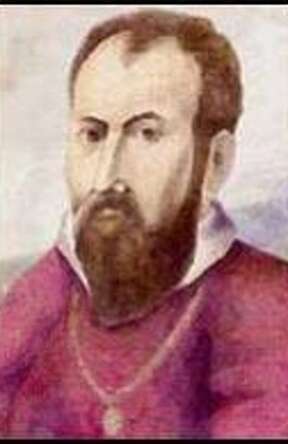DISPATCH
Alice E. Kober, 43; Lost to History No More
By MARGALIT FOX
Published: May 11, 2013
I RESCUE lost souls
Little did I realize six years ago, when I began work on a new book about the decipherment of an ancient script, that I would encounter the greatest backstage player I have ever written about: a woman who helped illuminate a world that flourished 3,000 years ago.
The woman was Alice Kober, an overworked, underpaid classics professor at Brooklyn College. In the mid-20th century, though hardly anyone knew it, Dr. Kober, working quietly and methodically at her dining table in Flatbush, helped solve one of the most tantalizing mysteries of the modern age.
The mystery centered on a long-lost script from Aegean antiquity known as Linear B. Inscribed on clay tablets around 1450 B.C., Linear B was unearthed in 1900 on Crete, amid the ruins of a lavish Bronze Age palace. The script, which teemed with pictograms in the shape of arrows, chariots and horses’ heads, resembled no writing ever seen. No one knew what language it recorded, much less what it said.
An unknown language in an unknown script is the linguistic equivalent of a locked-room mystery, and despite the efforts of investigators around the globe, Linear B endured for more than 50 years as one of the world’s great unsolved puzzles.
Then, in 1952, against all odds, the script was deciphered — seemingly in a single stroke. The decipherer was an amateur, Michael Ventris, a brilliant, melancholic English architect who had been obsessed with Linear B since he was a boy. He discovered that the script was used to write a very early dialect of Greek; set down in wet clay centuries before the advent of the Greek alphabet, it recorded the day-to-day workings of the first Greek civilization.
Though Mr. Ventris’s achievement brought him worldwide acclaim, it also left many unanswered questions. He had planned to write an account of his work, describing the incremental steps that led to his inspired solution. But he was unable to do so before he died in 1956, at 34, in a swift, strange car crash that may have been suicide. As a result, the story of one of the most breathtaking intellectual achievements in history remained incomplete for more than half a century.
Like so many canonical narratives of achievement, this story has a quiet backstage figure behind the towering public one. And here, too, as in other such stories (recall Rosalind Franklin, whose work, long unacknowledged, informed the mapping of the structure of DNA by Francis Crick and James Watson), that figure is a woman.
Alice Elizabeth Kober was born in Manhattan on Dec. 23, 1906, the daughter of recent immigrants from Hungary. A brilliant student, she earned a bachelor’s degree in classics from Hunter College, and it was there, in a course on early Greek life, that she appears to have encountered Linear B.
Enthralled — and already confident of her own blazing intellect — she announced on her graduation that she would one day decipher the script. She came within a hair’s breadth of doing so before her own untimely death, at 43, just two years before Mr. Ventris cracked the code.
Dr. Kober never married, nor do her hundreds of pages of correspondence reveal the faintest glimmer of a personal life. Each night, after her classes were taught and her papers graded, she sat at the table in the house she shared with her widowed mother and, cigarette burning beside her, sifted the strange Cretan inscriptions.
It was Dr. Kober who cataloged every word and every character of Linear B on homemade index cards, cut painstakingly by hand from whatever she could find. (During World War II and afterward, paper was scarce, and she scissored her ersatz cards — 180,000 of them — from old greeting cards, church circulars and checkout slips she discreetly pinched from the Brooklyn College library.)
On her cards, she noted statistics about every character of the script — its frequency at the beginnings and ends of words, and its relation to every other character — with the meticulousness of a cryptographer. Sorting the cards night after night, Dr. Kober homed in on patterns of symbols that illuminated the structure of the words on the tablets. For as she, more than any other investigator, understood, it was internal evidence — the repeated configurations of characters that lay hidden within the inscriptions themselves — that would furnish the key to decipherment.
DR. KOBER and Mr. Ventris met only once, and by all accounts did not like each other. But through her few, rigorous published articles, which together form a how-to manual for deciphering an unknown script, she handed him the key to the locked room. After her death, using the methods she devised, he attacked the mystery with renewed vigor and brought about its solution.
It is now clear that without Dr. Kober’s work, Mr. Ventris could never have deciphered Linear B when he did, if ever. Yet because history is always written by the victors — and the story of Linear B has long been a British masculine triumphal narrative — the contributions of this brilliant American woman have been all but lost to time.
By fortunate coincidence, an archive of Dr. Kober’s papers had opened at the University of Texas shortly before I began my research. As a result, I was the first journalist to have the privilege of seeing her groundbreaking analysis of the script in full.
Dr. Kober’s work on Linear B spanned more than a decade, and the archive includes sheaves of her correspondence with the few would-be decipherers she respected, plus her tens of thousands of homemade index cards, fitted neatly into “file boxes” made from empty cigarette cartons. Like so much of women’s lives at midcentury, all this — which reveals the steps Mr. Ventris took in his triumphant decipherment — had long existed outside the reach of posterity.
I am not certain how Dr. Kober would feel about her role in the decipherment being brought to light today. “The important thing is the solution of the problem, not who solves it,” she wrote to a young American colleague in 1949. But I prefer to take my cue from a letter she wrote two years earlier, on the publication in an academic journal of her scathing critique of another scholar’s misguided attempt to decipher Linear B.
“I hope he will not be too annoyed with my review,” Dr. Kober wrote. “But I feel that in scholarly matters the truth must always be told.”
So, too, in obits. After Dr. Kober died, on May 16, 1950, The Times published a short obituary article under the headline, “Prof. Alice Kober of Brooklyn Staff.” The article — the dutiful roster of job titles and professional memberships that typified obituaries of the period — devotes less than a sentence to her work on Linear B.
And so to redeem my profession, to correct a gaping omission in the story of one of the world’s great intellectual puzzles and to narrate a vital piece of American women’s history, I have chosen to reconstitute this singular unsung heroine at length, at last.




